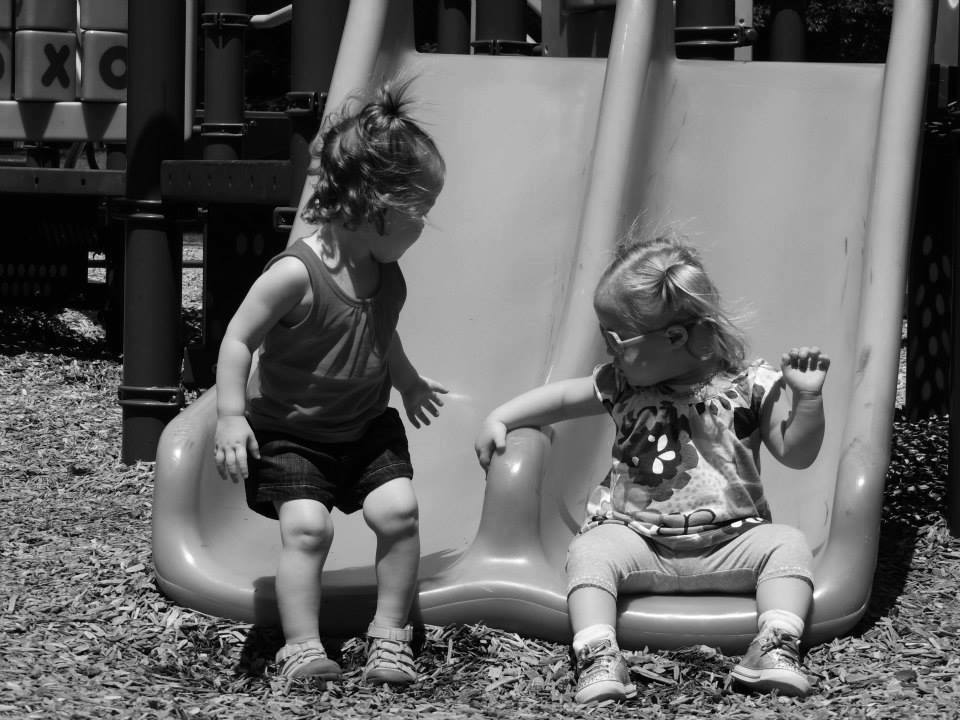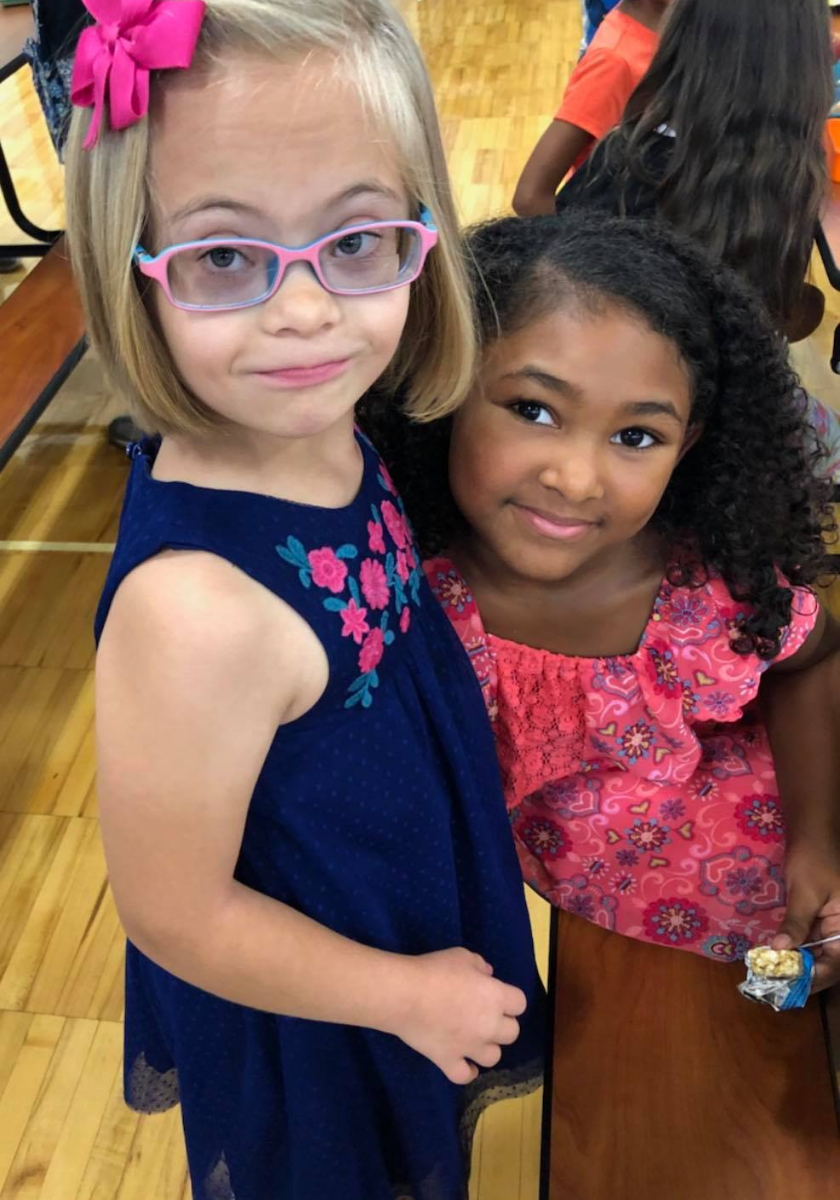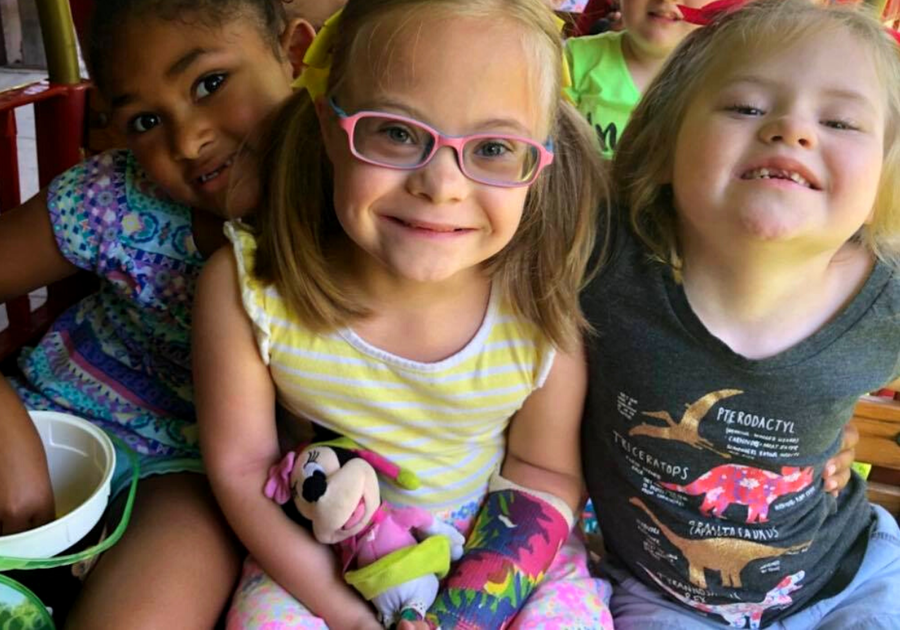October is known for pumpkins, crisp fall air, costumes, and football.
But did you know October is also Down Syndrome Awareness Month?
Down syndrome is the most common chromosomal disorder. About 1 in 700 babies are born with Down syndrome. People with Down syndrome have distinct facial features including almond-shaped eyes, a flattened nasal bridge, low set ears, and short stature. People with Down syndrome may have low muscle tone, making things like speaking and walking noticeably different from what children are accustomed to.
As a mom to three daughters with Down syndrome, I know peer relationships between my children and their non-disabled peers can be both difficult and amazingly beautiful!
I’m made aware of my children’s differences daily by the fact that other children might stare a little longer or seem uncertain about how to interact. Oftentimes in young children, this uncertainty is simply due to curiosity and a lack of exposure to those with disabilities. It’s natural for kids to be curious.
Chances are your child will encounter a peer with Down syndrome at school or in the community. Are you ready for their questions?
Here are three ways you can make that encounter a positive experience for all:
1. Follow your child’s lead and offer support
If you and your child are on the playground and your child notices a child with Down syndrome or another disability, observe how your child reacts. Many times young children are naturally accepting of others and may not even need your assistance!
However, some children may not be sure how to respond if they can’t understand another child’s speech or if they’re not sure how to physically interact with a child who has more limited mobility.
If this is the case, you may even see your child try to avoid the other child. If you notice this desire to interact mixed with some uncertainty, step in and model an appropriate interaction.
Introduce yourself and your child to their potential new friend (and their caregiver, assuming they're close by!). Ask the child directly if they’d like to play. Always speak directly to the child you're introducing yourself too, rather than the adult with them. Can’t understand their speech? No problem! Point out a similarity between your child and the other child to help your child see a way or two that they’re similar. Encourage them with an activity that requires little to no conversation, such as starting a game of hide and seek or follow the leader. Then step back once your child feels more comfortable.
 Photo by Sarah Basile Photo by Sarah Basile |
2. Encourage your child to ask questions
Almost all children will have questions or comments, or may even stare when they notice someone who looks different.
While it certainly can feel difficult to navigate the questions that children may ask such as, “Why does he talk like that?” or “What’s wrong with her eyes?” the worst thing a parent can do is to quiet their child or move them away out of embarrassment.
Instead, take your child's interest as the perfect time to start a conversation about disability.
If your child asks these types of questions, first reflect back what you’re hearing: “You noticed her words sound different than yours," for instance.
Next, explain nothing is wrong with the child, as this is often a word many children will include with their question.
Young children with Down syndrome may need help answering some questions your child may have. They will likely have an adult nearby. Feel free to include them in the conversation.
“I'm not sure, let’s ask his Mom,” is a fine response. Or, "I'm not sure, but we all have lots of ways we are different AND similar."
Your child will notice your confident interaction with the other child and his caregiver, and imitate that in the future. Teaching your child to value differences early on will help them navigate many other differences they'll encounter in life, including cultural and racial differences.
 Photo by Amy Koszewski Photo by Amy Koszewski |
3. Use easy-to-understand language
You don't need to give a lengthy explanation about a disability to young children just beginning to understand differences.
Usually a simple answer such as “she’s still learning how to talk,” or “she uses her hands to talk to us,” will suffice.
Many times, the child will be able to relate to simple answers and even make a connection to themselves.
It’s always exciting when a child responds back something like, “I can talk, but I’m still learning how to climb the monkey bars!”
Avoid saying things that show pity for the child or unnaturally pressure your child to play with the other child just because she has a disability.
Just like all children, those with disabilities prefer to have genuine friendships where they feel valued.
Sarah Basile lives in Erie, Pa., with her husband and three daughters.
Want to learn more about Down syndrome? The National Down Syndrome Society offers a Q&A for kids, fact sheets, and other resources.



